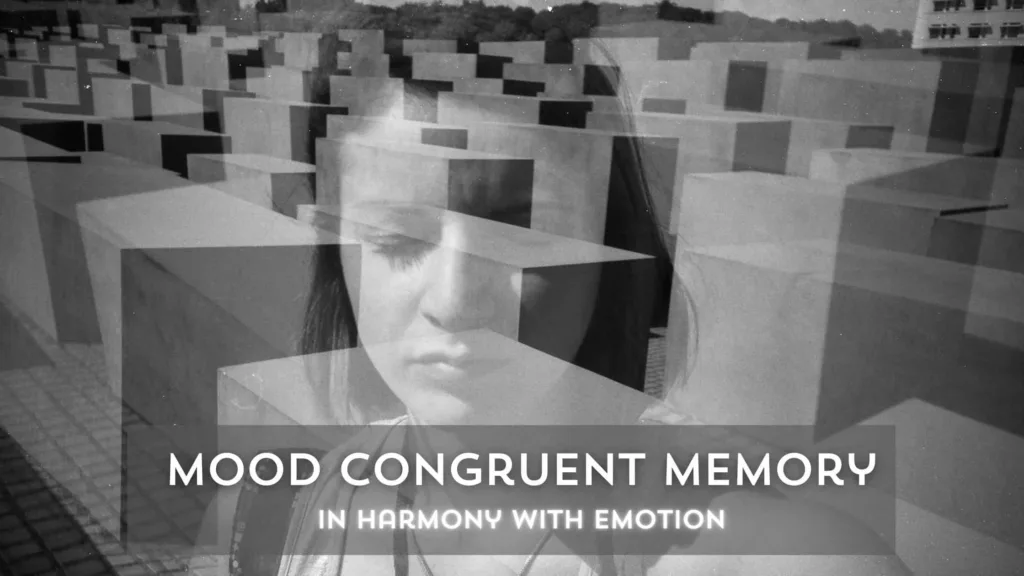Memory is like a super important tool in our brains. It helps us remember stuff from the past and learn new things. It’s not just about facts and figures; memory affects how we make choices, feel emotions, and how we’re doing overall. One really cool thing about memory is that it can be influenced by how we’re feeling. This leads to something called Mood Congruent Memory.
What is Mood Congruent Memory?
Mood congruent memory means that when we feel a certain way, we tend to remember things that match that feeling. For instance, if we’re feeling happy, we’ll remember happy times like a fun day at the park or a birthday party. But if we’re feeling sad or worried, we’re more likely to recall sad or worrisome events, like a time we felt lonely or a scary moment. This shows how our emotions and memories work together. So, if we’re in a good mood, we’re likely to remember good things, and if we’re feeling down, we might remember not-so-great stuff. It’s like our feelings act as a filter for our memories.
Mechanisms Behind It
Mood-Congruent Encoding and Retrieval Model:
- This theory suggests that our emotions affect how we remember things.
- When we feel a certain way while learning or experiencing something, we’re more likely to remember it if we feel the same way later.
- For example, if we were happy when we learned something, we’ll remember it better when we’re happy again.
Brain Regions Involved:
- Studies using brain scans like fMRI have shown that specific parts of our brain play a big role in how emotions affect our memory.
- The amygdala, which handles emotions, seems to help our brain decide what memories are important based on how we felt when they happened.
- Another part, the prefrontal cortex, helps us retrieve those memories when we’re feeling the same way again.
The Role of Neurotransmitters:
- Neurotransmitters are chemicals in our brain that help nerve cells communicate.
- Dopamine and serotonin are two neurotransmitters linked to mood.
- They also have a say in how our memories form and stick around.
- If these chemicals aren’t working right, it can make our memory act up, like in depression or anxiety, where we might remember bad stuff more than good.

Negative Aspects of Mood Congruent Memory
- Making Bad Feelings Worse: When we’re feeling down, mood congruent memory brings up sad or anxious memories, making us feel even worse.
- Getting Stuck in a Sad Loop: It can create a cycle where sad thoughts lead to sad memories, which make us feel even sadder, trapping us in a gloomy state of mind.
- Hard to Think Positive: Mood congruent memory makes it tough to see the bright side of things because our memories match our current mood, making it tricky to shake off negative thoughts.
- Trouble Controlling Emotions: It can mess with our ability to control how we feel since our memories stick to our current mood, making it tough to switch to feeling happy or calm.
- Feeling Down Overall: Mood congruent memory can lead to more sadness, anxiety, and gloominess, affecting how we feel in general.
Related Article: Flashbulb Memory: Photographs of the Mind
Way Forward?
- Teachers as Memory Wizards: Imagine teachers as memory wizards! When they understand how mood congruent memory works, they can wave their magic wands to teach in ways that make students remember things better.
- Happy Classrooms, Happy Minds: Picture a classroom where smiles are as common as pencils. When the classroom feels like a cozy hug, it’s easier for students to remember what they learn. It’s like sunshine for the brain!
- Emotion Superheroes in Training: Teachers can be like emotion superheroes, teaching students how to handle their feelings and stress. When students learn these superpowers, they can conquer any learning challenge and soar like eagles in school.
- Therapists: Mood Doctors: Therapists are like doctors for our moods. They use their special knowledge about mood congruent memory to sprinkle healing dust on people feeling down. It’s like a warm blanket for the soul!
- CBT: The Brain’s Gym: Think of cognitive-behavioral therapy (CBT) as a gym for the brain. It helps people flex their mental muscles, changing negative thoughts into positive ones. With CBT, memories become friends that bring smiles instead of frowns.
Mood congruent memory shows how our feelings and thoughts work together, affecting how we remember things. It’s like a dance between emotions and thinking. By figuring out how this works, scientists have learned a lot about how our memory and emotions are connected. Understanding how mood congruent memory works can help us find new ways to help people. It also reminds us how important it is to take care of our emotions every day.

Pingback: Retrograde Amnesia: The Struggle of Remembering